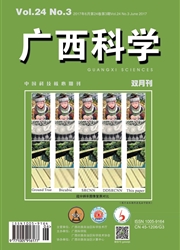

 中文摘要:
中文摘要:
分别采集贵州荔波董哥洞、荔浦丰鱼岩、桂林响水洞的石笋,研究三个洞穴分辨率达1000年、100年、10年级的石笋δ^13C记录。结果表明,石笋δ^13C值可以系统地记录地表岩溶作用过程与植被生态变化的历史。在冰期或干旱寒冷期,岩溶不发育,成壤条件差而缓慢,不利于植被生长,δ^13C值偏重,以C3植物(禾本科植物)为主。在温暖湿润期,岩溶发育好,成壤条件好而且速度快,利于植被生长,δ^13C值偏负或偏轻,以C3(木本植物)植物为主。晚全新世以来,人类活动持续不断地破坏森林植被,草类植被得以生长,石笋的δ^13C值急速上升、偏重,以C3植物为主,石漠化增强,水土流失严重。此后,升高的δ^13C值很难再回复到中全新世以前的水平。自然因素和人类活动因素等对生态环境的影响,均会导致植被变化,成倍放大δ^13C值,特别是人类活动对自然生态的影响更为严重。
 英文摘要:
英文摘要:
High resolution δ^13C isotope records from three stalagmites in millennial, centennial and decade timescale were obtained from Dongge Cave of Libo,Guizhou,Fengyu cave of Lipu,Guangxi and Xiangshui Cave of Guilin,respectively. The results indicate that karst is lack of development,the condition of the soil-forming is poor and slow, which hampered vegetation grow, resulting in C4 plant dominant with the heavierδ^13C value in the glacial period or cold-dry period. Otherwise in warm humid stage karst is well development,soil-forming is fast with good conditions,vegetation grow well, thus C3 plant has predominant with the negative value. Since late Holocene, human activity may predominate over the nature, the forest vegetation is destroyed continuous but grass grows well,which C4 plant become the dominant vegetation, the δ^13C value of stalagmites increase rapidly,rock desertification aggravate because of serious water and soil erosion. Since then,it is very difficult to make heavier δ^13C value back to the level before middle Holocene. By discussing the effect factors of δ^13C value change from stalagmites, we considered that the influence of the ecological environment from the nature factor or human activity could result in the vegetation change, and δ^13C value change could make enlargements of double, decade times, and hundred times. In particular, human activity affects nature ecological environment more severely. The influence of human activity o'nly brings about the degeneration of forests and vegetation, leads to δ^13C value change irom stalagmites, and also accelerates aggravation of rock desertification, serious water and soil erosion in karst region.
 同期刊论文项目
同期刊论文项目
 同项目期刊论文
同项目期刊论文
 A High Resolution Paleoclimate Record over the Last 1,200 Years in Stalagmite L2 from the Longquan C
A High Resolution Paleoclimate Record over the Last 1,200 Years in Stalagmite L2 from the Longquan C 期刊信息
期刊信息
